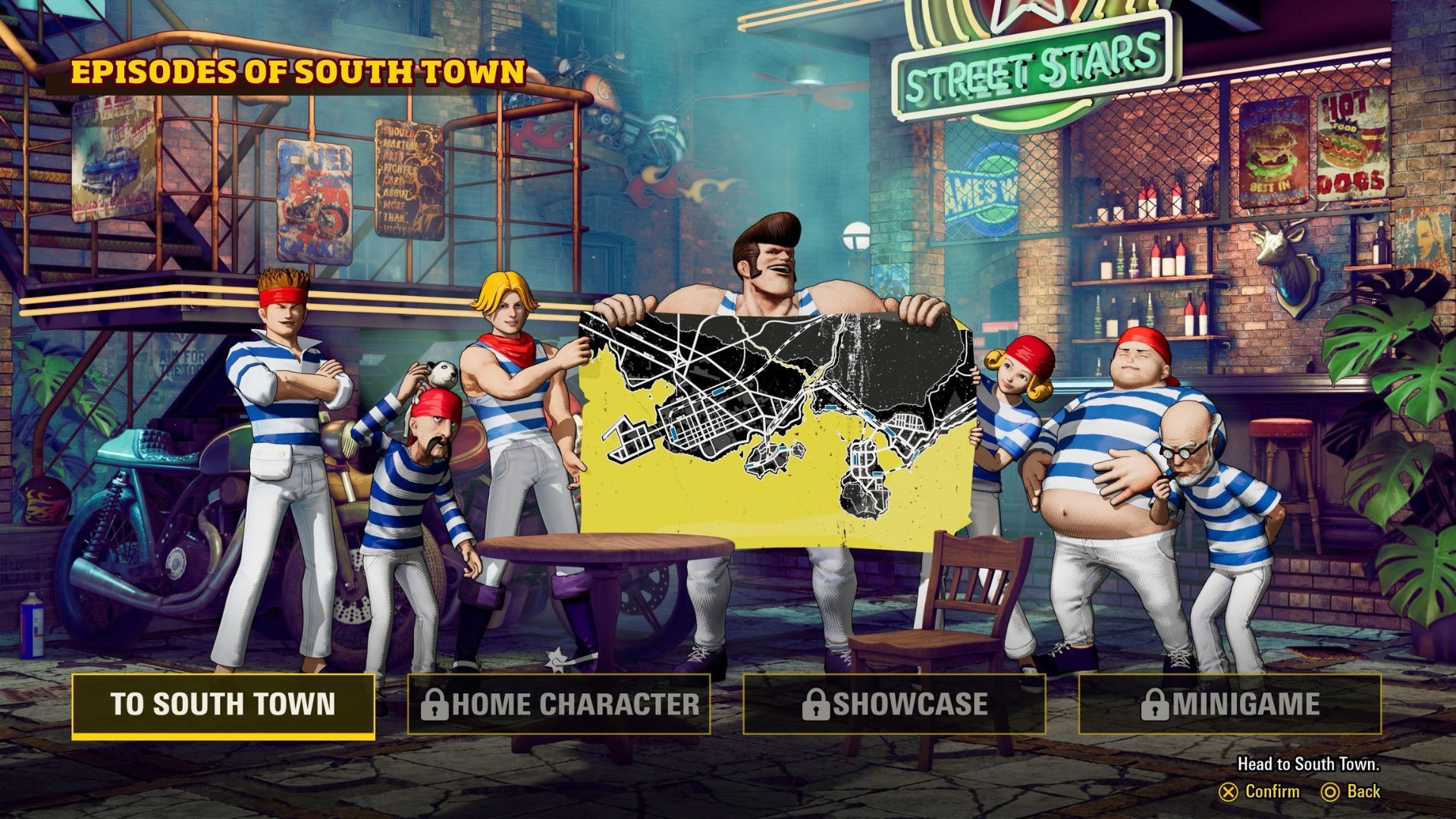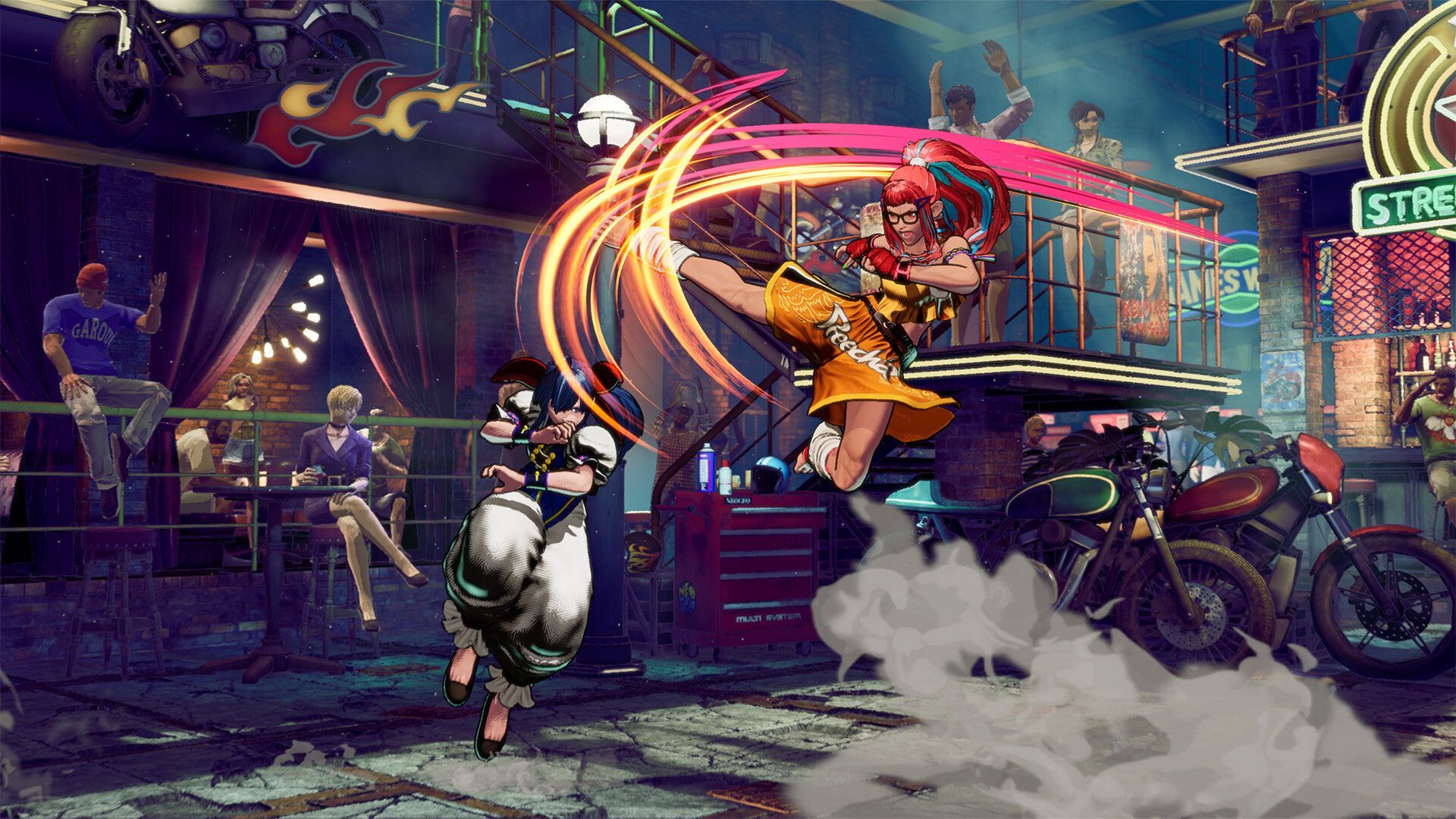
Since I started playing Soulcalibur VI in 2018, I haven’t found another fighting game that I’ve enjoyed as much as Fatal Fury: City of the Wolves, which brings back one of my favorite franchises.
Although the solo modes may not match up with contemporary quality as demonstrated by games like Street Fighter 6 or Tekken 8, the fundamental mechanics prove to be intricate and challenging (yet enjoyable) to master, which is unexpected given the current trend among developers to simplify system mechanics for a broader audience appeal.
REV It Up
The primary draw of COTW lies in its REV System, which serves a similar function to the Drive Gauge in Street Fighter 6. With your REV meter, you can perform a variety of actions: employ EX moves (REV Arts) to inflict additional damage, connect these special moves using the REV Accel mechanic that allows for chaining multiple REV Arts, and even utilize REV Guard, a unique defensive feature that increases pushback during blocking and shields against chip damage.

There’s another feature associated with the meter called REV Blow. This feature is connected to a unique bar known as the Selective Potential Gear (S.P.G). Now, the S.P.G bar may require some further explanation, but for now let me just say that REV Blow could cause some debate. To avoid comparing it to SF6 again, I’ll mention that REV Blow performs a role similar to Drive Impact in actual gameplay. You can utilize it to deflect your opponent’s attacks and inflict heavy damage if you successfully execute it. However, there’s a twist: If your adversary also has the S.P.G meter charged, they have the ability to respond to REV Blow and counter-attack with a counter-REV Blow.
Does this sound like something you’ve encountered before? To some extent, yes. The REV Blow move offers unique scenarios because each character uses it differently. During my gaming sessions, I managed to retaliate against an opponent who had successfully executed the REV Blow on my initial attack. This was possible due to the fact that the character I was controlling, Hokutomaru, could perform a follow-up REV Blow move. However, this ability is not shared by all characters; it’s a characteristic exclusive to Hokutomaru.
Regarding the S.P.G bar, it adds another layer of strategy to the game before the first round even begins. This bar correlates with your health and at the start of a match, you get to decide where to position it. It protects about one-third of your health, allowing you to opt for an initial advantage or save it for potential comeback situations. The S.P.G bar provides extra benefits beyond the REV Blow – your attacks will deal increased damage and you’ll also unlock your character’s Hidden Gear, a special two-bar super that instantly resets your REV Meter.
In relation to that topic, when your character reaches COTW’s state of exhaustion known as Overheat, it puts you at a significant disadvantage. Firstly, your ability to chain combos will be greatly reduced because you won’t have access to REV Arts. Secondly, without REV Guard, you become vulnerable to continuous minor damage, or chip damage.
Additionally, each time you prevent an attack, your defense meter begins to decrease. If it runs out, you’ll enter a state called “guard crush”, leaving you vulnerable to heavy damage from incoming attacks.
In contrast to many contemporary combat games, success in City of the Wolves hinges significantly on mastering defensive strategies. The skills Just Defense and Hyper Defense, if practiced diligently, can distinguish the skilled players from the exceptional ones. Essentially, Just Defense activates when you block an impending attack at the exact moment before getting hit, granting a small amount of health and decreasing your REV Meter simultaneously.
One way to express the advantage of using Just Defense is that it allows for Guard Cancels, which can be done at the expense of some REV Meter. With this feature, you can execute special moves as a counterattack against actions that would typically go unpunished.
In Hyper Defense, when a move hits multiple times, you can quickly tap forward and then swiftly input a super. This special super possesses a Zero Frame property, allowing it to appear instantly without any startup animation. However, there are unusual situations that may arise when using invincible startup supers with multi-hits, which can potentially be blocked. In this specific instance, I utilized Hyper Defense on the initial hit of a REV Art fireball and followed up with an invincible multi-hit super. Though it connected, it ultimately collided with the second fireball impact, so be aware of this interaction.
In addition to this, you’ll find both feints and breaks at your disposal. Feints can be employed to trick opponents, while breaks maintain your offensive strategy. The break mechanism allows you to halt the animation of specific powerful moves that could potentially put you in a vulnerable position if performed without cancellation.
A Lukewarm Solo Trip To South Town
For those less experienced players, the appeal of Country of Towns (COTW) might lie more in its simplicity rather than its intricate mechanics. In truth, the solo content in COTW isn’t particularly deep.

City of Wolves offers its typical arcade mode, excluding Cristiano Ronaldo for now, but SNK has mentioned he’ll join later. For those new to the series, the story might seem unfamiliar. However, for loyal fans, it’s a delightful experience watching how these characters have evolved since their last appearance.
Additionally, there exists “Episodes of South Town,” a single-player game mode reminiscent of an RPG storyline, which can be played with all characters (except for one renowned Portuguese character). Regrettably, it doesn’t fully embrace being a comical single-player choice for individuals wanting to explore the fighting game genre. Most matches play out like standard ones, with occasional quirky challenges thrown in, including a secret one that can be quite frustrating; I’d rather leave its discovery up to you for an authentic experience.
One appealing aspect of the offline or quirkier modes is the reintroduction of two-lane battles. At present, they’re confined to a single stage, with additional stages planned for later, but they offer a unique touch to the game, although it may not be extensively played unless you’re particularly fond of classic SNK games.
Regarding customization, the edit color feature offers an impressively intricate range of options. Although Change of the Warriors might not provide various outfits (except perhaps for Terry), the ability to create a Strider-inspired color scheme for Hokutomaru compensates for that limitation.

A notable feature is that SNK generously provided fans with a substantial jukebox, functioning as a digital museum showcasing their extensive music legacy within the genre. You are able to create playlists featuring your preferred tracks and access them across various stages.
Not So Smart Style
Although the solo mode isn’t exceptionally rich, it manages to serve as a decent diversion from the ranked struggle. However, the game falters somewhat when it comes to accessibility features.
In simpler terms, Smart Style, which serves as SNK’s response to Street Fighter’s Modern or Tekken’s Special Style, falls short and seems awkwardly inserted. Smart Style offers features like auto combos and one-push super moves, but lacks crucial elements such as feinting and braking, essential mechanics in the gameplay. The absence of these fundamental techniques is more than just a few missed moves; it’s about entire game-changing mechanisms being out of reach.
Additionally, despite being labeled as “Smart Style,” Hidden Gears continue to necessitate manual motion inputs from players, which contradicts the very essence of smart design.
Time To Hit The Lab
If you prefer a more intense learning experience, the training setting provides some substantial adjustments for you to experiment with. However, it currently doesn’t include certain player-expected enhancements like the ability to control replays.
In summary, I find the practice sessions in the game quite basic. It seems to me that SNK might intentionally avoid providing optimal combo paths, allowing players to explore on their own. However, offering just five trials for Arcade Style (traditional controls) and three for Smart Style feels a bit sparse or limited.
Indeed, the training mode remains quite functional with a variety of recording options to customize numerous situations. However, one feature that novices, especially those transitioning from Street Fighter 6, might find missing is the absence of in-game character guides. While you can easily access this information online, it would have been convenient to have all these details readily available without needing to open YouTube or Twitter.
An Online That’s Not Quite There Yet
As a fan, I must admit that my expectations have been raised by the seamless netcode of modern titles such as Street Fighter 6, Granblue Fantasy Versus Rising, and Guilty Gear Strive. While City of the Wolves offers a decent gameplay experience, it’s not quite up there with the elite in my book.

The game uses a type of network code called rollback, which usually gives you a good gaming experience when conditions are optimal. However, if you encounter a Wi-Fi player in ranked matches, you might experience some significant problems such as lag and delayed or skipped moves. For instance, while playing someone with high latency (over 180ms), I experienced screen freezes during crucial moments like trying to execute a REV Art follow-up.
Regardless of opinions on the crouching mid-kick followed by a drive rush in Street Fighter 6, the enchantment Capcom has worked into its online play, making it flow so effortlessly, remains unmatched and unparalleled by other game developers.
As a dedicated gamer, I’ve noticed that the lobby system seems a bit laggy, and it’s definitely an issue that SNK needs to tackle. If I’m aiming to participate in regular online tournaments, it can get quite frustrating really quickly.
All things considered, Fatal Fury: City of the Wolves stands out as an exceptional combat game. If you’ve been yearning for a challenging fighting title brimming with intricate defensive and offensive strategies to master, then SNK has just the right game for you.
If you’re expecting a gaming experience like what other top-tier fighters have provided lately, you might find it falls short. However, the first season of DLC coming essentially free is a consumer-friendly move that could persuade you to try this game out, especially if you’ve grown weary of others relying on battle passes in a paid experience to continuously squeeze money from players.
As for me, I’m sticking around South Town for the foreseeable future.
PS5 and Steam codes were provided by SNK for the purpose of this review.
Read More
- Fortress Saga tier list – Ranking every hero
- Cookie Run Kingdom Town Square Vault password
- Glenn Greenwald Sex Tape Leak: Journalist Cites “Maliciously Political” Motives
- Grimguard Tactics tier list – Ranking the main classes
- Mini Heroes Magic Throne tier list
- Castle Duels tier list – Best Legendary and Epic cards
- How to Prepare and Dominate the Awakened Hollyberry Cookie Update
- Overwatch Stadium Tier List: All Heroes Ranked
- Cat Fantasy tier list
- EUR CNY PREDICTION
2025-04-21 11:13